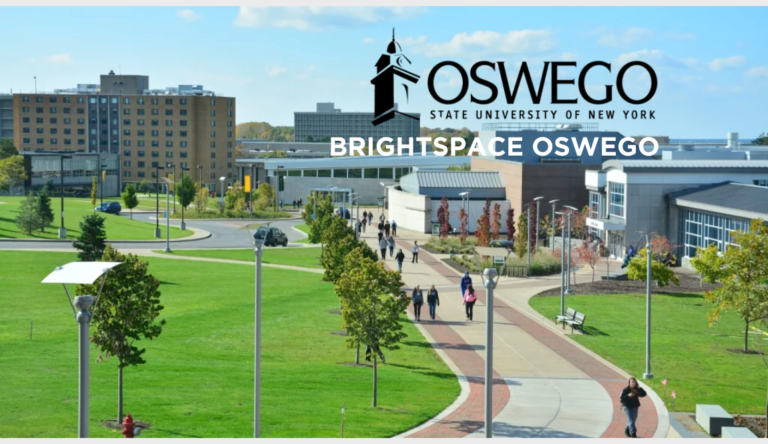Introduction: Transition to Brightspace at SUNY Oswego
In recent years, the landscape of education has seen a rapid transformation, especially in terms of the digital tools available to enhance teaching and learning experiences. One significant shift at SUNY Oswego has been the adoption of Brightspace as the primary learning management system (LMS). Replacing Blackboard, which served the university for several years, Brightspace was introduced to improve the online learning experience for both students and faculty. This transition has not only modernized the technological framework of the university but has also brought with it a slew of positive feedback from its users. The reception of Brightspace Oswego has mainly been favorable, with many students and faculty members highlighting its intuitive design, robust features, and improved functionality over its predecessor.
Why the Shift to Brightspace?
The decision to transition to Brightspace was not made lightly. As educational institutions continually strive to improve their digital infrastructure, it became clear that SUNY Oswego needed an LMS that could keep up with the demands of modern education. Blackboard, while functional, had begun to show its age, with many users reporting issues related to its user interface, reliability, and overall functionality. These concerns prompted the administration to explore alternatives that could better meet the needs of the university’s diverse academic community.
After a thorough evaluation process, which included feedback from both faculty and students, Brightspace was selected as the new LMS for SUNY Oswego. Brightspace, developed by D2L (Desire2Learn), is known for its user-friendly interface, flexibility, and comprehensive suite of tools designed to support a wide range of teaching and learning styles. The transition was seen as an opportunity to not only replace an outdated system but also to enhance the overall learning experience at SUNY Oswego.

Enhanced User Experience for Students
One of the most significant aspects of Brightspace that has garnered praise from students at SUNY Oswego is its user-friendly design. The platform’s clean and intuitive interface makes it easy for students to navigate their courses, assignments, and grades. Unlike Blackboard, which some students found cumbersome and challenging to navigate, Brightspace offers a more streamlined experience. It reduces the learning curve for new users and allows students to focus more on their coursework rather than on figuring out how to use the platform.
The dashboard on Brightspace provides a comprehensive overview of upcoming assignments, deadlines, and recent announcements, which has been particularly appreciated by students juggling multiple courses. The calendar feature, integrated directly into the platform, helps students manage their time more effectively, ensuring that they do not miss important deadlines. Additionally, the notification system, which can be customized according to individual preferences, allows students to receive alerts about new grades, assignment feedback, and upcoming due dates via email or mobile notifications. This level of personalization has been a game-changer for many students, who now feel more in control of their academic responsibilities.
Faculty Perspective: Teaching with Brightspace
From the faculty perspective, Brightspace has been welcomed as a tool that enhances teaching capabilities while simplifying course management. One of the most frequently cited benefits is the ease with which faculty members can create and organize course content. The drag-and-drop functionality allows for quick uploading of files, videos, and links, making it easier to compile and structure course materials in a logical and accessible way. This has significantly reduced the time spent on course setup, allowing instructors to focus more on curriculum development and student engagement.
Brightspace also offers a variety of assessment tools that faculty members have praised. The platform supports multiple types of quizzes and exams, including multiple-choice, true/false, short answer, and essay questions. Instructors can easily create and customize these assessments, as well as provide detailed feedback directly within the platform. This has not only streamlined the grading process but also enabled more timely and constructive feedback for students, which is essential for their academic growth.
Moreover, the platform’s analytics capabilities have been a valuable addition for instructors. Brightspace offers detailed insights into student engagement and performance, allowing faculty to track which students are struggling and which course materials may need to be revisited or clarified. These analytics can also inform teaching strategies, enabling instructors to tailor their approaches based on real-time data. For instance, if an instructor notices that a particular module has low engagement, they can modify the content or delivery method to better meet students’ needs.
Challenges and Areas for Improvement
While the overall response to Brightspace at SUNY Oswego has been positive, it has its challenges. As with any new technology, there has been a learning curve associated with the transition, particularly for faculty members who were accustomed to Blackboard. Some instructors have reported difficulties in migrating their courses to the new platform, especially when it comes to transferring complex course structures or large volumes of content. Although Brightspace offers support and resources to assist with this process, it has still posed a challenge for some users.
Another area for improvement is the platform’s performance during peak usage times. Some students and faculty have reported that Brightspace can be slow to load or unresponsive during critical periods, such as when assignments are due or during exam weeks. These performance issues can cause frustration and stress, particularly for students who rely on the platform to submit assignments on time. The university’s IT department has been working closely with D2L to address these issues, but it remains an area where further optimization is needed.

Looking Ahead: The Future of Brightspace at SUNY Oswego
Despite these challenges, the overall reception of Brightspace at SUNY Oswego has been overwhelmingly positive. Both students and faculty have recognized the platform’s potential to enhance the learning experience, and many are optimistic about its continued development and integration into the university’s academic framework.
Looking ahead, there are several ways in which Brightspace could further evolve to meet the needs of the SUNY Oswego community. For instance, increased customization options for both students and faculty could allow for even more personalized learning and teaching experiences. Additionally, continued improvements in performance and mobile functionality will ensure that the platform remains reliable and accessible for all users.
Conclusion: A Successful Transition
The transition to Brightspace at SUNY Oswego represents a significant step forward in the university’s ongoing efforts to provide a high-quality, modern educational experience. While the shift has not been without its challenges, the overall response from students and faculty has been largely positive. The platform’s user-friendly design, robust features, and flexibility have made it a valuable tool for both teaching and learning, and there is a general sense of optimism about its future at the university.


